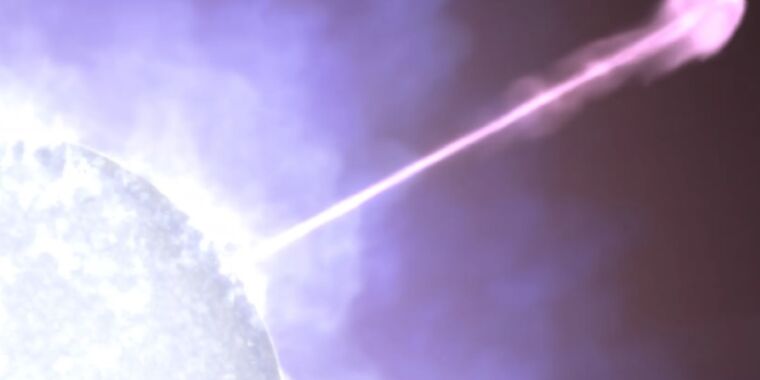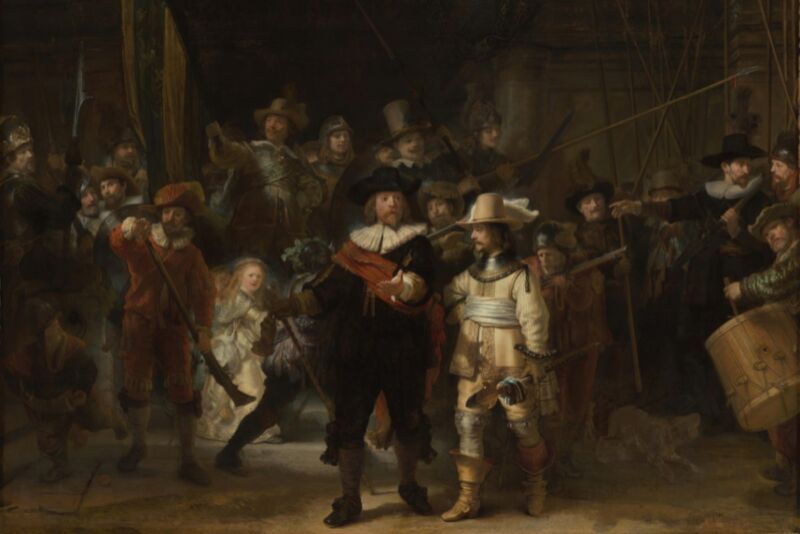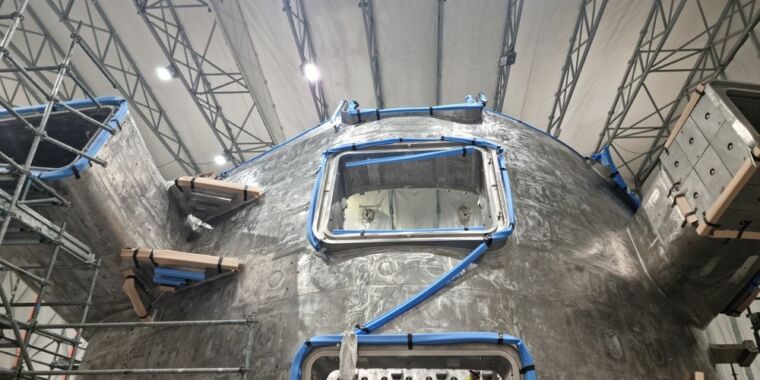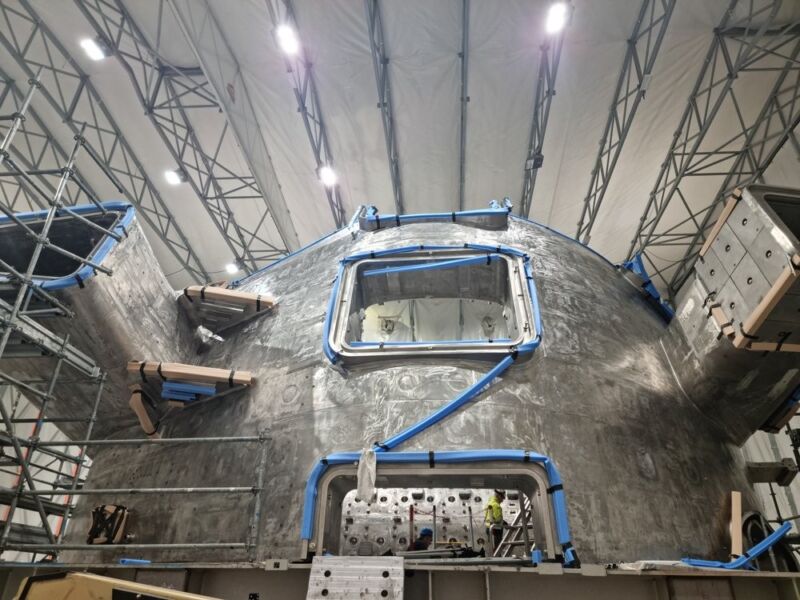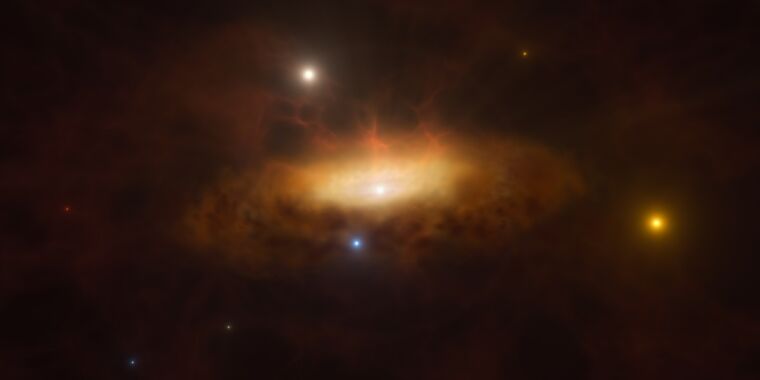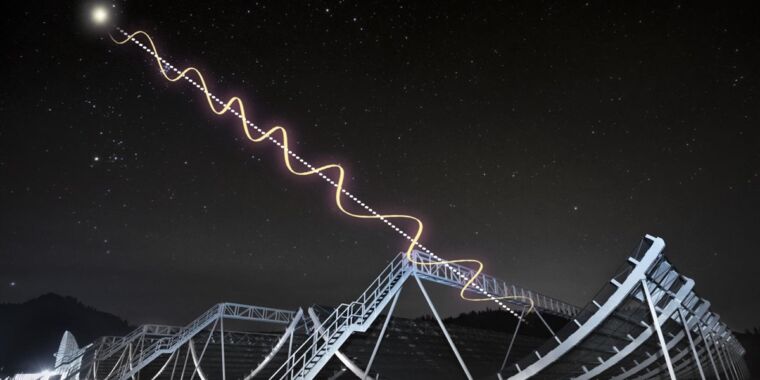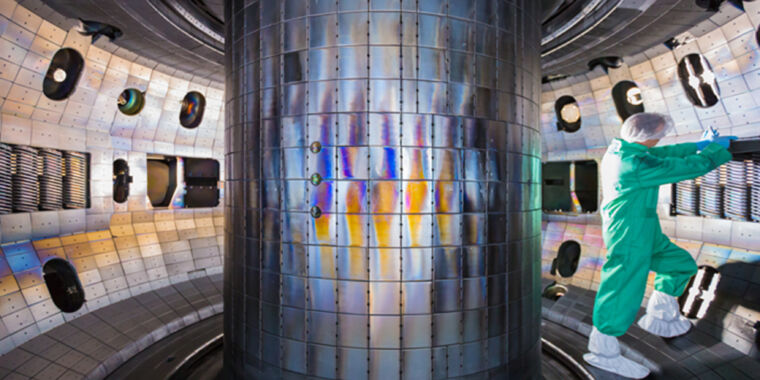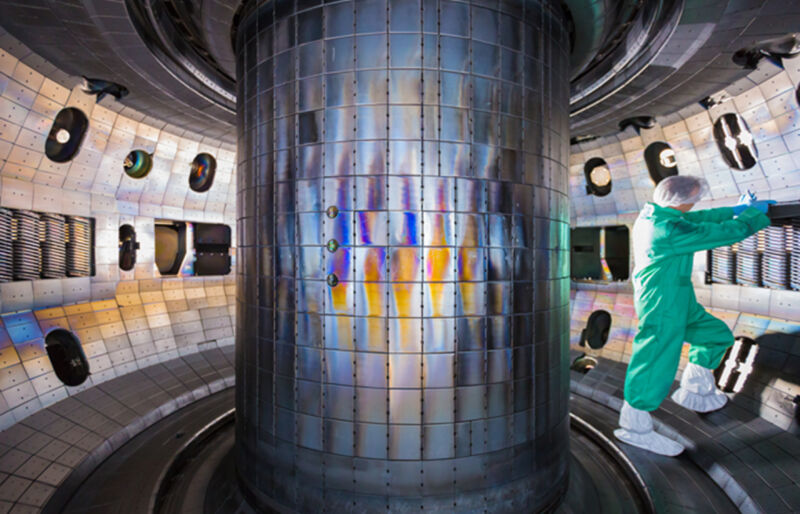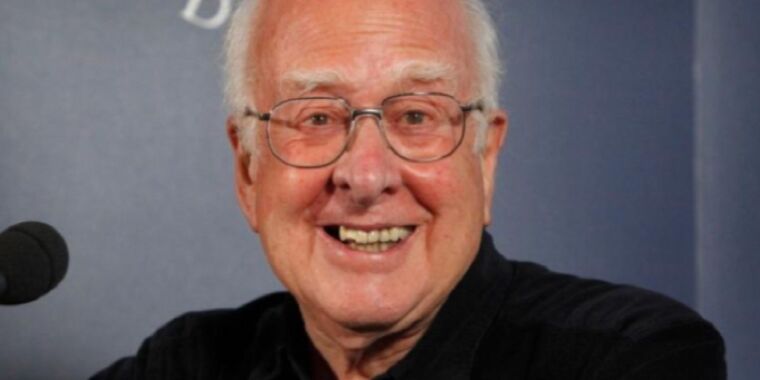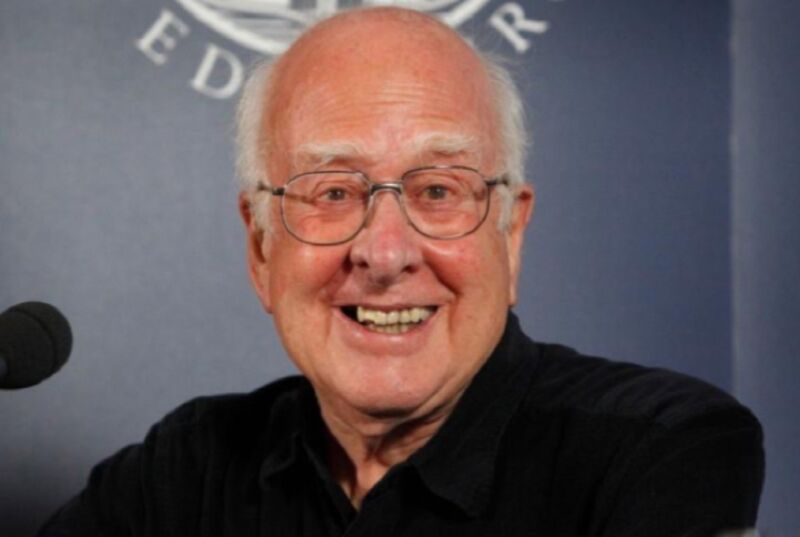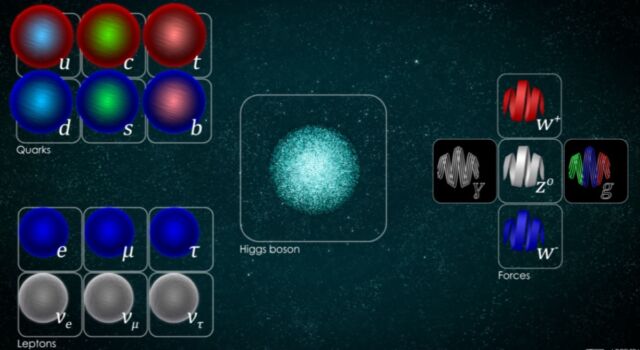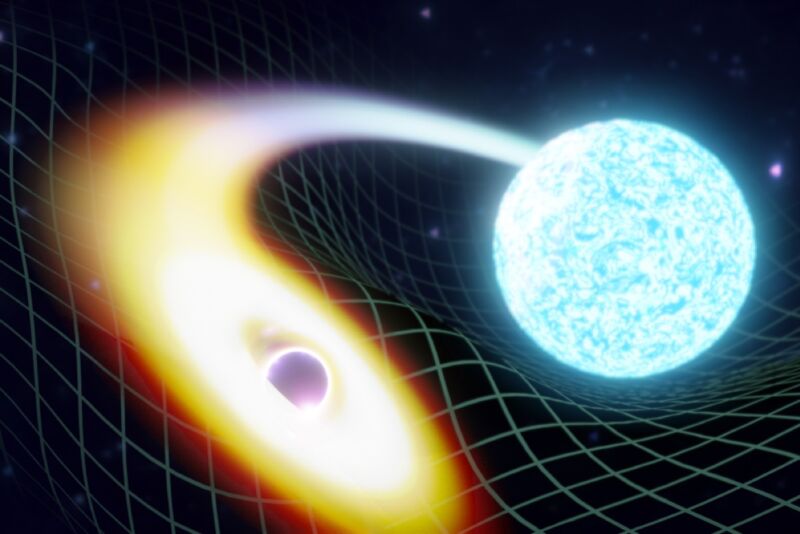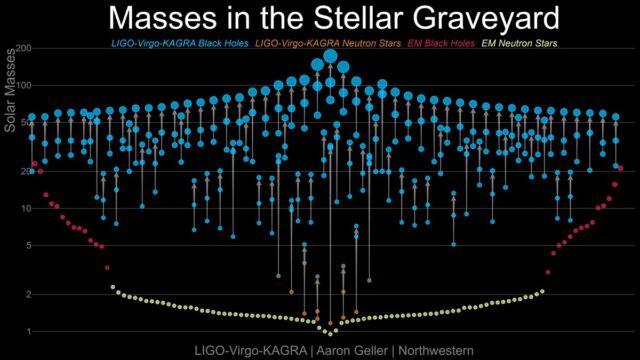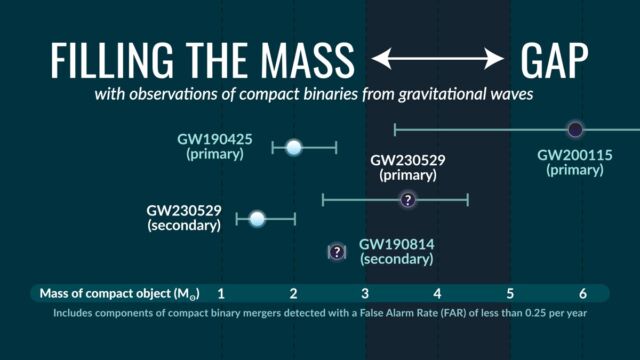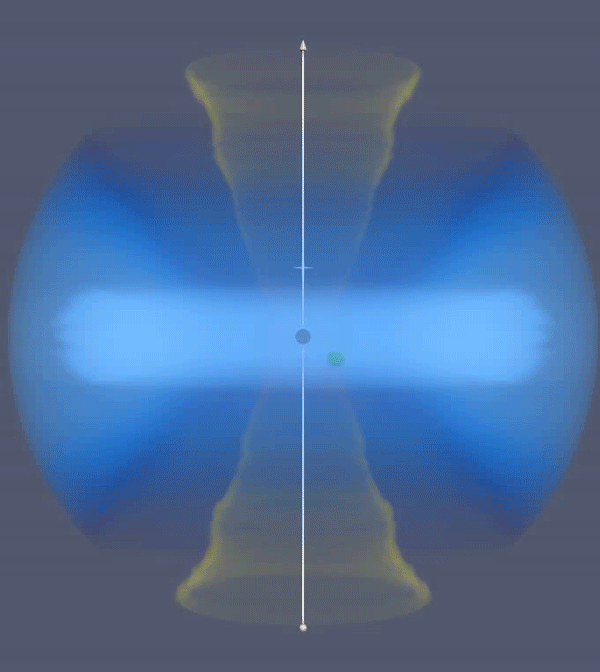Astronomers find first emission spectra in brightest GRB of all time
shine on, you beautiful BOAT —
Chance that first detected emission line is a noise fluctuation is one in half a billion.

Enlarge / A jet of particles moving at nearly light-speed emerges from a massive star in this artist’s concept of the BOAT.
NASA’s Goddard Space Flight Center Conceptual Image Lab
Scientists have been all aflutter since several space-based detectors picked up a powerful gamma-ray burst (GRB) in October 2022—a burst so energetic that astronomers nicknamed it the BOAT (Brightest Of All Time). Now an international team of astronomers has analyzed an unusual energy peak detected by NASA’s Fermi Gamma-ray Space Telescope and concluded that it was an emission spectra, according to a new paper published in the journal Science. Per the authors, it’s the first high-confidence emission line ever seen in 50 years of studying GRBs.
As reported previously, gamma-ray bursts are extremely high-energy explosions in distant galaxies lasting between mere milliseconds to several hours. There are two classes of gamma-ray bursts. Most (70 percent) are long bursts lasting more than two seconds, often with a bright afterglow. These are usually linked to galaxies with rapid star formation. Astronomers think that long bursts are tied to the deaths of massive stars collapsing to form a neutron star or black hole (or, alternatively, a newly formed magnetar). The baby black hole would produce jets of highly energetic particles moving near the speed of light, powerful enough to pierce through the remains of the progenitor star, emitting X-rays and gamma rays.
Those gamma-ray bursts lasting less than two seconds (about 30 percent) are deemed short bursts, usually emitting from regions with very little star formation. Astronomers think these gamma-ray bursts are the result of mergers between two neutron stars, or a neutron star merging with a black hole, comprising a “kilonova.” That hypothesis was confirmed in 2017 when the LIGO collaboration picked up the gravitational wave signal of two neutron stars merging, accompanied by the powerful gamma-ray bursts associated with a kilonova.
Several papers were published last year reporting on the analytical results of all the observational data. Those findings confirmed that GRB 221009A was indeed the BOAT, appearing especially bright because its narrow jet was pointing directly at Earth. But the various analyses also yielded several surprising results that puzzled astronomers. Most notably, a supernova should have occurred a few weeks after the initial burst, but astronomers didn’t detect one, perhaps because it was very faint, and thick dust clouds in that part of the sky were dimming any incoming light.
Earlier this year, astronomers confirmed that the BOAT came from a supernova, thanks to the telltale signatures of key elements like calcium and oxygen that one would expect to find with a supernova. However, they did not find evidence of the expected heavy elements like platinum and gold, which bears on the longstanding question of the origin of such elements in the universe. The BOAT might just be special in that regard; further data will tell us more.
“It gave me goosebumps”
A few minutes after the BOAT erupted, Fermi’s Gamma-ray Burst Monitor recorded an unusual energy peak. Scientists now say this feature is the first high-confidence emission line ever seen in 50 years of studying GRBs.
The newly detected spectral emission line was likely caused by the collision of matter and anti-matter, according to the authors, producing a pair of gamma rays that are blue-shifted toward higher energies because we are looking into the jet. Having a spectral emission associated with a GRB is important because it can shed light on the specific chemicals involved in the interactions. There have been prior studies reporting possible evidence for absorption or emission lines in other GRBs, but they have usually turned out likely to be statistical noise.
That’s not the case with this latest detection, according to co-author Om Sharan Salafia at INAF-Brera Observatory in Milan, Italy, who added that the odds of this turning out to be a statistical fluctuation “are less than one chance in half a billion.” His INAF colleague and co-author, Maria Edvige Ravasio, said that when she first saw the signal, “it gave me goosebumps.”
Why did astronomers take so long to detect it? When the BOAT first erupted in 2022, it saturated most of the space-based gamma-ray detectors, including the Fermi Space Telescope, making them unable to measure the most intense part of that blast. The emission line didn’t appear until a good five minutes after the burst when it had sufficiently dimmed for Fermi to make a measurement. The spectral emission lasted for about 40 seconds and reached a peak energy of about 12 MeV, compared to 2 or 3 MeB for visible light, per the authors.
Science, 2024. DOI: 10.1126/science.adj3638 (About DOIs).
Astronomers find first emission spectra in brightest GRB of all time Read More »
